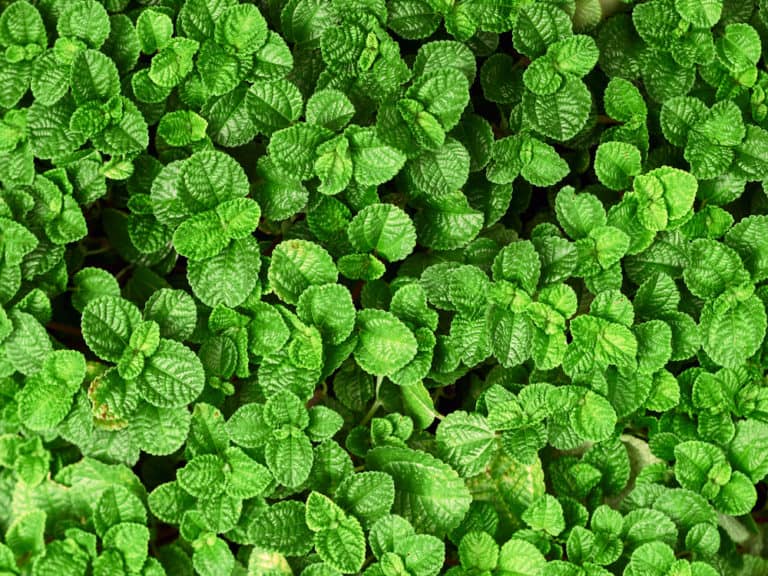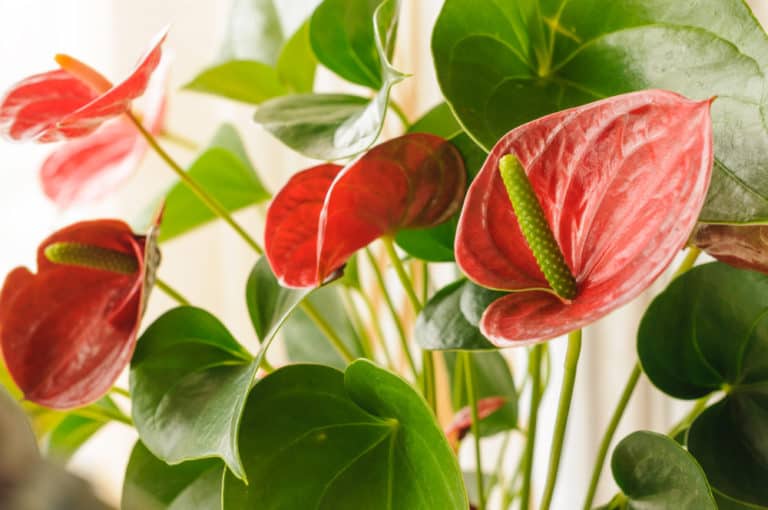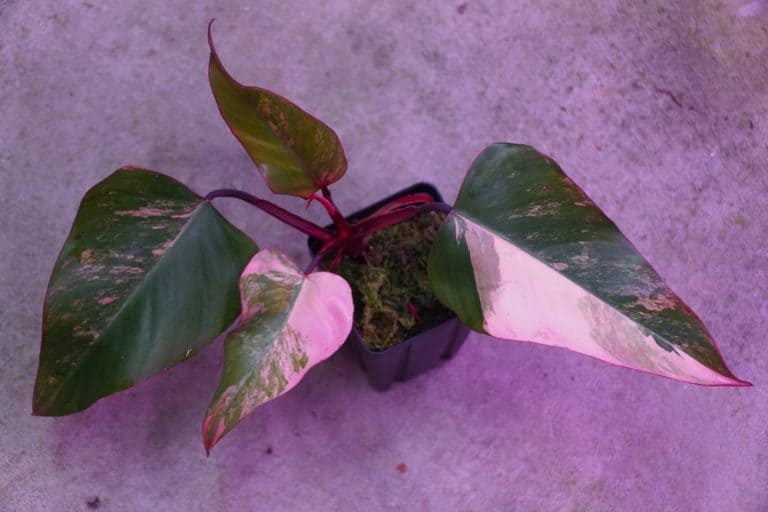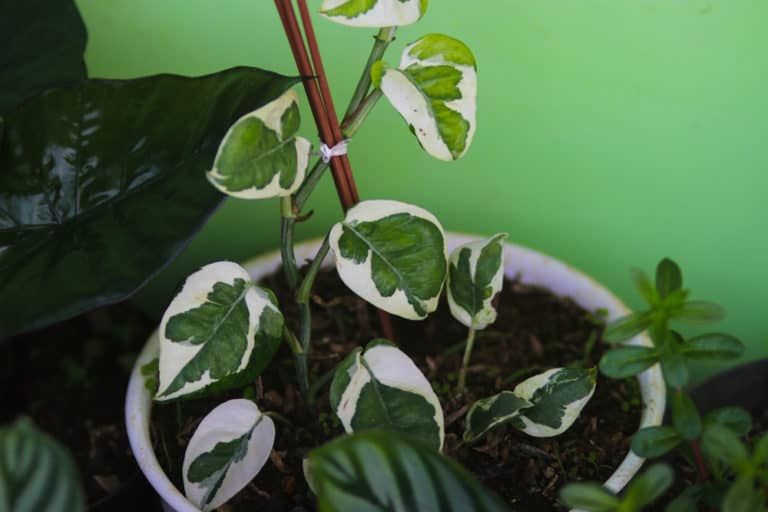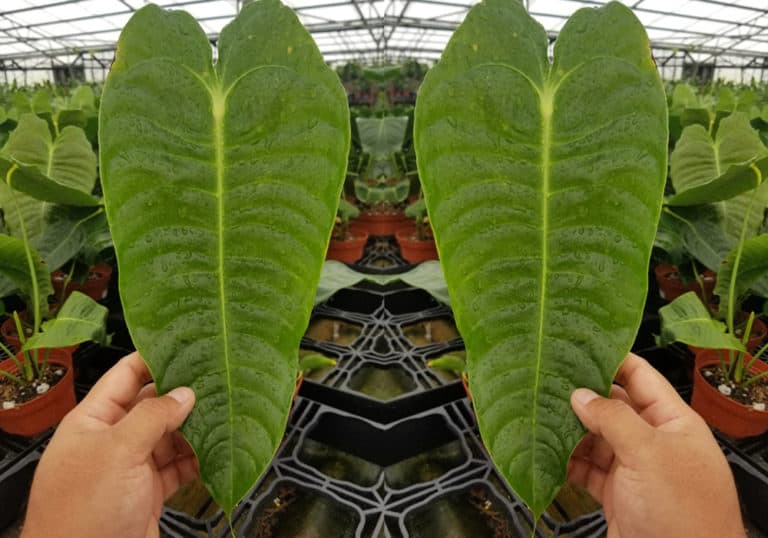Syngonium ‘Pink Splash’ Care Guide (2024)

Pink Syngonium or “Syngonium Pink Splash” is one of the most popular plants for all the plant lovers out there. It has stunning foliage, with exquisite pink color and the leaves are shaped like an arrow.
Incredibly easy to care for, it has won the hearts of plant lovers all across the world for this reason specifically. It is an indoor plant mostly, but it can grow outdoors in a space with mild light.
| Scientific Name | Syngonium Neon Robusta |
| Common Name | Pink Syngonium, Podophyllum pink, Arrowhead plant |
| Light | Bright indirect sunlight |
| Watering | Weekly, water if the top half of soil is dry |
| Temperature | 60-80°F (15-26°C) |
| Hardiness Zone | 10-12 |
| Humidity | 40-50% |
| Soil Type | Well-draining, slightly acidic soil |
| Soil pH | 6 to 6.5 (mildly acidic) |
| Fertilizing | A balanced feed once a month in spring and summer |
| Repotting | Every 2 years |
| Pruning | Beginning of the growing season |
| Propagation | Root in water or soil |
| Toxicity | Toxic to humans and pets |
| Mature Size | 8-10 inches (20cm-25cm) |
| Bloom Time |
What’s Unique About Pink Syngonium?
The plant is famous mostly because of the pink undertone the leaves have. If you check your Instagram now, you will see it everywhere! It is an eccentric plant, and at the same time, it doesn’t require much to be happy. It originates from the tropics too, and has the habit (or tendency if you like) to climb.
It has the ability to filter the air in a room, and release more oxygen during the night, along with the classic Syngonium Podophyllum plant. It mostly grows as a lush and fluffy bush, and it is also great to use it for terrarium set ups.
Pink Syngonium Care
The Pink Syngonium plant care is very easy to follow and maintain. It needs bright indirect light mostly and well-drained soil. If you want to reach the best Syngonium Pink Splash care, you can offer the plant some good humidity and fertilize it during early spring.
Light
In general, a room with 1000 lux (regular sunny day light) will do the magic on this plant. Since the color here is a bit different, the Pink Syngonium light requirements slightly change.
While the classic Podophyllum would need a medium to low light, the Syngonium Pink Splash light needs really bright light to maintain its color and vibrancy.
You will need to place the plant either on the top of the library near a window (there is something about them, they like sitting somewhere high). If it is next to a window, but not high up, it is more than fine- just make sure that the light hits the leaves for a few hours every day.
Be careful not to place the plant in full sun, as it gets easily burned. This also is the case when you plan to place it outdoors; it is best to plant it somewhere with medium to low light.
Watering
When you water Syngonium Pink Splash, it is best to check when the soil is about to dry, and then water it again. If it is still moist or you wait way too long before watering it again, the leaves begin to look like they have brown stains on them. It is quite hardy as a plant, with normal watering needs.
It can withstand the pressure of not having water for some time, but don’t generally test it. Also, for the Pink Syngonium watering, you can use rain water, since it really enjoys the minerals.
Temperature
The Pink Syngonium temperature range falls in between 60-80°F (15-26°C). It has hardiness and temperature tolerance, but if it gets too cold or too warm, it begins to lose the color. If the temperature for Syngonium Pink Splash remains within the ranges we said above, it will start to grow non stop, and become more vibrant.
It doesn’t like extreme temperatures like too cold or too warm. Both extreme ranges of temperature will cause the plant to lose the vibrancy, and then the leaves altogether. During winter, you can place it somewhere close to the heater, with caution though.
It will be able to manage the warmth without feeling stressed. During summer, it is best to avoid using the air conditioner, since it completely changes the room temperature and makes the air dry. You can move it to a different room so you can both be happy.
Humidity
The humidity level is important for the plant to grow successfully. The ideal humidity for Syngonium Pink Splash is at least 40-50%. If you don’t reach at least this level, it will be really demanding to grow and maintain the Pink Syngonium humidity requirements.
If you don’t have high humidity in your space, you can place the syngonium in your bathroom. You can also try my classic trick with pebbles/lecca on a dish with water.
The best way to keep the humidity steady with this plant when investing in a humidifier seems like a challenge, is to find a good spot in the bathroom and leave it there.
If you need to move it, you need to make sure that the plant goes somewhere with the same humidity levels it gets when you shower… it might be quite difficult to achieve it.
Soil
I’ve come to find out that Syngoniums are secretly acidic soil lovers. When you go out to buy some soil for Syngonium Pink Splash, keep in mind that the soil they prefer needs to be well-draining, but acidic.
So what would be the perfect soil mix? Coconut coir and some orchid bark mixed with perlite is the ideal Pink Syngonium soil.
The orchid bark here will make sure that the acidity of the plant is around 6 to 6.5, which is the perfect ph level for Syngonium Pink Splash.
If you want to use a different type of soil, make sure that it is at least made specifically for indoor plants only. Indoor plant soil mixes always contain perlite, and don’t become stiff and hard one they get dry.
Fertilizer
Since the plant doesn’t require much plant food, any general fertilizer will do. I usually recommend the NPK chain, because it a slow-release product, which gives a good fertilizer ratio, and makes it the perfect fertilizer for Syngonium Pink Splash.
You can apply it every month, during spring and summer; since the plant goes dormant in winter there is no need for any Pink Syngonium fertilizer.
Keep in mind that you need to read the instructions on the fertlizer. The NPK chain is very strong, and needs to be followed by the rule. Experimenting with the fertilizing ratio can lead to severe burns of the roots.
Potting & Repotting
When you are about to indulge yourself in some Pink Syngonium repotting, keep in mind that the pot size just needs to be a little bigger than the pot the plant has now.
The correct potting has draining holes as well on the pot, and takes care of the roots, because the syngoniums have the tendency to become root-bound.
For a successful repotting of the Syngonium Pink Splash, make sure to gently handle the roots once you pull the plant out of the pot.
Once you install it in its new home, offer some water so the soil can begin to nourish and provide.
Pruning
Since the plant has long vines, the Pink Syngonium pruning will need to happen at least once before winter, and once before spring. This will help you keep the plant in shape, without the overgrown stems.
You will notice that the plant will develop some aerial roots since it is a climber (those tiny little brown circles). When cutting Syngonium Pink Splash, make sure you trim underneath those aerial roots, so you can stimulate new growth and to make it look bushy again.
You can also prune the leaves that seem to be discolored, or completely dry. Syngoniums tend to absorb energy from the dead leaves quite quickly. If you don’t prune them along with the overgrown stems, the plant won’t get the signal to start the new cycle of growth.
Propagation
If you want to propagate Syngonium Pink Splash, all you have to do is to use the stems you have from the pruning.
The ones you want for the Pink Syngonium propagation are the ones that have the aerial root next to them. You can place them in water, and wait patiently for the new roots to come out. Clean the water frequently!
I wouldn’t suggest placing the stem directly in soil. Since the cut is brand new, it runs the risk of root rot once you pour water into the soil. Give it some time, let it grow the roots so it can be established, and then put it in soil.
Common Problems of Pink Syngonium
The most common problems with Syngonium Pink Splash that are recorded are the leaves turning green or brown, or even curling up. They might get droopy too. Pests are also common Pink Syngonium problems along with fungal diseases.
Pests
Pink Syngonium pests aren’t that common, but it can indeed happen. Usually, the Syngonium Pink Splash is very resistant and hardy to bugs and pests.
If something goes out of control with your watering schedule and the soil never dries out, the plant might attract spider mites and mealybugs.
There is no reason to panic, just use neem oil diluted with water. If you want longlasting results, use it frequently with a commercial fungicide, so they can both act as a shield for the plant.
I suggest using the fungicide and the neem oil mixture interchangeably. Use the neem oil, and wait 10 days. Then, spray some fungicide in moderation. You can do this for prevention all year long if you want to.
Diseases
Mostly we know about root rot as a case of Pink Syngonium diseases.
Syngonium Pink Splash is a sturdy plant, but if the soil doesn’t drain, there is a specific limit up to which the roots can remain strong. Imagine you being stuffed with unlimited gallons of water – this is how the plant is feeling.
In order to fight this, and prevent the plant from any future fungus attacks, it is best to change the soil mix, and poke some holes for some good air circulation.
You can add some cinnamon if you want to at the base of the soil, and let it stay there and act as a protection from the fungi. Everytime you water, the cinnamon just goes deeper and deeper.
Growing Problems
The growing problems you might face are mostly focused on the leaves. If you notice that the plant has brown spots, they are turning green, or just droopy, then you have an overwatered Pink syngonium on your hands.
Don’t run into the conclusion that you have a sick plant. If you stop overwatering and over fertilizing, the problems will soon go away. Syngoniums are like Monsteras- they can be quite forgiving.
It might take some time to get adjusted to the plant’s schedule and rhythm of doing its own thing. But it can happen, if you learn to follow their flow.
Toxicity of Pink Syngonium
Syngonium Pink Splash is indeed poisonous and also has toxic properties for pets. If you have children or pets and want to purchase it, you might have to find a spot where they can’t reach it at all.
The plant contains calcium oxalate in the stems, which causes burning, swelling and stomach issues if the leaves are bitten and the sap is swallowed.
For Humans
For humans, the sap can be quite dangerous if the sap touches the skin or is swallowed by accident.
Because of the calcium oxalates, it can cause intense burning of the mouth and lips and intense gastric irritation. For small children it is as dangerous as it is for adults. It is best to keep the plant out of their reach completely.
There used to be a myth back in the old days about syngoniums. A lot of people thought that they were indeed poisonous. For such a strong reaction, half of the plant needs to be “consumed” and swallowed.
For Pets
Both cat owners and dog owners should avoid having this plant indoors at least, since it is very toxic and poisonous for pets. Once the sap is swallowed, it can lead to burning and drooling at first, which can be easily cured.
If a large quantity of stems is chewed, then it can lead to death as well. If you want indeed to have a syngonium in your space, make sure it is completely out of reach. You might be asking how come for us humans the syngoniums are just toxic, and why for the pets the reaction is extreme.
The reason is mostly because their organisms react differently to the chemicals found in everything they eat. They also are way smaller than us in size.
Pink Syngonium Appearance
The plant has arrow-shaped leaves, in a pink vibrant tone, with some dark olive undertones. The leaves also have a small lined pattern. It has long stems that tend to grow upwards, moving in all directions.
Another characteristic of Pink Syngonium appearance is that the leaves tend to grow bigger as the plant reaches the mature stage of life.
Foliage
The foliage of Pink Syngonium is the most intriguing part of it. The leaves are pink, shimmery, with nice olive green undertones. During spring you will notice that each leaf tends to grow bigger, very fast.
They grow from any direction, and the vining stem makes it grow upwards. As the plant matures in age, you will notice that the leaves will get bigger, and way darker in color.
They will grow sometimes in pairs, making the plant look even more fluffier and bushier. If you want the plant to grow sideways as well, all you have to do is to prune it often.
Flowering
Many will argue that the plant isn’t blooming at all, but that isn’t the case. Pink Syngonium flowering can happen, but it is not something one can experience by having it as an indoor plant. In nature, it happens a lot and very frequently. Personally, I haven’t come across one at all, and my own syngonium never showed any blooming tendencies.
In case you were wondering, the flower looks like the one Alocasias and Monsteras have: a spade, usually white or yellow in color, with a big petal behind it that looks like it is protecting it. The white spade contains all the sexual reproductive system of the plant.
Size and Growth
The size of Pink Syngonium in the mature stage can reach up to 40 cm in height. Don’t let that discourage you or make you think that this isn’t a big plant. The growth rate speeds up during spring and summer, and these fellas have the tendency to become extra bushy.
Don’t become too surprised if you see your syngonium acting like it is out of control. I have rarely seen a happy syngonium that isn’t at least 70 cm long and tall. The 40 cm is the one they usually reach, but if they are really happy with how you take care of them, they will grow beyond the 40 cm length.
Pink Syngonium Fragrance
There is a flower that is supposed to grow during early spring and summer, but there is no documented scent.
There are a lot of questions in regards to Pink Syngonium fragrance, but for now, the bibliography or the plants that are now brought into homes, haven’t shown any blooming at all.
I certainly hope we can learn more about it in the future.
If I have to judge from the similar flowers found on Monsteras and Alocasias, it might not have any fragrance at all. It might be used from the plant only as a way to reproduce, and nothing more.
Suggested Uses for Pink Syngonium
Pink syngonium is mostly used now as an indoors plant. It can grow outside to make a statement, it just needs to be in a spot that gets the right amount of light.
As an indoors plant, it can be placed as a statement piece in your living room. It will catch everyone’s attention immediately, especially if you plant it in a white pot- it will enhance all the features it has!
You can also place it in your bathroom as a statement, but also for some extra help when the humidity is running low.
The syngomium will also make a great roommate for you in the bedroom, since it can filter your air and help you sleep better. Truly, the possibilities are endless!
FAQ
What is Pink Syngonium?
Pink syngonium is a tropical plant originating from Bolivia and Brazil. Some people say it originated from Mexico and the West Indies too.
How to identify Pink Syngonium?
It has arrow shaped pink leaves, with olive green undertones.
How to care for Pink Syngonium?
The plant enjoys bright indirect light, well-draining soil, and high humidity.
How to grow Pink Syngonium indoors?
Place it near a window, and water it once the soil is about to dry. Fertilize once every month during spring and summer.
How to grow Pink Syngonium outdoors?
The care tips are the same as above, just make sure to plant it in a spot with medium to low light.
How fast does Pink Syngonium grow?
It goes dormant through the winter, but during spring and the summer, it tends to grow really quickly.
How tall does Pink Syngonium grow?
It can grow up to 40 cm high, and it tends to become really bushy as well.
How to make Pink Syngonium grow faster?
Make sure you fertilize it during the growing season, and let it soak as much sunlight as it can throughout the day from the window.
How to stake Pink Syngonium?
Use moss poles and soft garden wire and tie the stems carefully on the pole.
How to pot Pink Syngonium?
Get some coconut coir, perlite and orchid bark and fill the pot with the soil mix. Add the plant and add water so that the soil will start nourishing the plant.
How to revive Pink Syngonium?
Cut all the dead leaves, and make sure the soil drains. If it doesn’t change the soil and add more orchid bark.
Why is my Pink Syngonium dying?
It might be a case of underwatering or overwatering. Check and act accordingly. Also make sure the plant has enough sunlight.
Why is my Pink Syngonium drooping?
This happens because you are overwatering. Let it be for a while, and poke some holes on the pot.
How cold can Pink Syngonium tolerate?
As a plant, the Pink syngonium can be quite hardy, but don’t let it get cold. It might react very abruptly and lose the leaves it has on now.
H3 How to get rid of pests on Pink Syngonium?
Spray some neem oil diluted with water, and do it frequently. You might need to purchase a commercial pesticide for extra protection.
Is Pink Syngonium toxic to cats?
Yes it is. It can have poisonous effects once the sap from the stems and leaves are swallowed. It is best to keep them away from it.
Is Pink Syngonium toxic to dogs?
Same results with the cats. It is best to keep them away so you can prevent them.
Is Pink Syngonium toxic to children?
Yes it is. It can cause burning and gastric irritation.
Is Pink Syngonium toxic to humans?
Yes. It can cause burning, diarrhea, and burns if the sap is touched or consumed.
Does Pink Syngonium have a scent?
At the moment, since we haven’t seen a flower in a domesticated syngonium so far, this question remains open to research.

